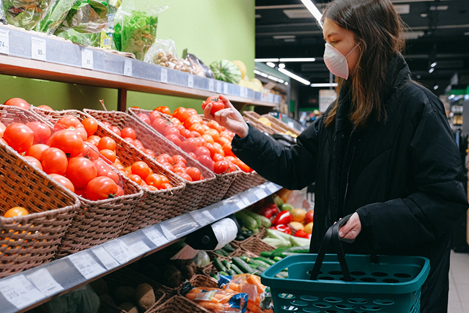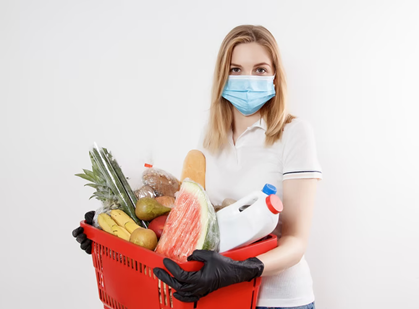The coronavirus pandemic shook the world to its core. In an instant, everything changed, and both businesses and consumers would never be the same. What resulted was a total shift in how people spent their money. The question now remains, will these changes be temporary or long outlive the pandemic itself?

Here are some of how personal spending has changed during this surreal time in our lives. See if you recognize any of these changes in your own spending habits:
Spending increases
Home entertainment
As people were cut off from the outside world, home entertainment exploded. After all, everyone needed ways to pass the time while staying at home, whether alone or with their families. Streaming services like Netflix and Hulu were prime candidates for this surge in business, as premium content was a perfect way to pass the time. In April 2020, Netflix reported subscriber growth of 16 million new users thanks to lockdowns worldwide.
Lockdowns also forced gym-goers to adjust to working out at home. As a result, more and more people opted to purchase home gym equipment that would last them well beyond the pandemic. Some estimates put fitness equipment sales up 170% as a result. Everything from treadmills to free weights moved from the neighborhood gym to garages and living rooms, a trend that is likely here to stay.
Grocery delivery

With so much time stuck at home, consumers started to get creative in the kitchen. However, with most people terrified to leave their homes, grocery delivery services stepped in to fill the void. Google searches for “food delivery” hit an all-time high as the coronavirus peaked in April 2020, and residents of many European nations that would never think about having their groceries delivered—such as Italy and France—began to concede.
Home improvement
Instead of taking that vacation, families decided to take their vacation money and redo their kitchen or bathroom. Companies like Home Depot and Lowes saw massive growth in 2020, with items like faucets, kitchen cabinets, and toilets garnering the most attention.
With so many people looking to expand their living quarters, the price of lumber skyrocketed to $1,544, a more than 300% increase from April 2020 to May 2021. Luckily for home builders and renovators, lumber has recently settled back down to more reasonable numbers.
Vehicle and camper van purchases
With air travel seeming riskier, consumers set their sights on another form of travel. Vehicle purchases of all kinds, from used cars to camper vans, boomed over the pandemic’s summer months as consumers hoped to get on the road and avoid the mental slog that being stuck at home brought so many people. To give some perspective, Outdoorsy, a US-based RV rental company, exploded with 4,600% year-over-year growth.
The result for consumers has been increased pricing across the vehicle market. Used car prices were on average 4.9% higher, which prices out many potential buyers. However, this is a potential benefit to those looking to trade-in or sell their used car, as dealers are more willing than ever to pay higher prices for used vehicles.
Spending decreases
Dining out
The increase in grocery spending came to the detriment of restaurants everywhere. Even a bump in delivery revenue couldn’t offset the unwillingness of consumers to dine out. Therefore, restaurants took a dive, with many closing and failing to reopen even after strict lockdown restrictions were lifted. It’s estimated that in Europe alone, $95 billion in revenue was lost for the restaurant sector during this time.
Air travel

Restrictions around the globe made air travel all but impossible for much of 2020. Even when vaccines started to reopen the world, air travel has not yet recovered to pre-pandemic levels. Take these statistics about air travel out of Germany as an example:
Approximately 31 million passengers departed from German airports in 2020. This compares with 124 million in 2019. The number of passengers transported decreased by 75%.
And recent travel statistics are not much better. Some estimates put 2021 global air travel at 43% of the level seen in 2019 before the coronavirus began to take its toll.
Professional sports

2020 shattered professional sports. And if athletes could compete, it was in front of reduced crowds or empty stadiums. Additionally, fans purchased less team merchandise and memorabilia without seeing their favorite athletes up close and personal. This didn’t just hurt the teams themselves, but also all other businesses that benefit from sporting events.
Take the Olympics as an example. First, the Olympics were postponed, which cost Japan millions of dollars. Then, when the games were played, they were done without any fans in attendance. Olympic fans usually generate significant sums of money for the host country in the form of airfare, food, lodging, and other spending. Sponsors also dropped out, leaving even more money on the table.
Will these spending trends last?
Eventually, we hope that life will return to some form of normalcy, but the question remains if the trends in consumer spending will far outlast the global pandemic. Some trends—like staying in to watch Netflix instead of going out to the movies—will probably stick, while others may not. It will be interesting to see how consumers reach for their wallets in the coming years, and how they may or may not differ from these recent trends.
Staying in and cooking your own meal is a great way to save money. Check out this article for more frugal living tips.